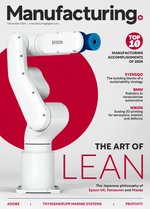GSMA: business demand drives 5G evolution

Bringing together global carriers, industry leaders, leading academics and equipment and device vendors, Global System for Mobile Communications Association (GSMA) at the Mobile World Congress Shanghai 2021 hosted the 5G Advanced Summit to share their 5G industry insights.
"The world has witnessed inspiring commercial rollout of 5G in the past two years. By 2030, 5G will have evolved into the most dominant mobile technology that will create huge value to society,” commented Alex Sinclair, CTO of GSMA.
5G in manufacturing operations
At the summit, business demand was said to be the main driving force behind the continuous evolution of 5G. Other driving factors include, the increased popularity of augmented reality (AR) and virtual reality (VR) services which are driving the increase in data of usage (DOU), projected to exceed 100GB by 2025.
In order to drive digitalisation across vertical industries, it was also noted that 5G must be further integrated with such industries to build a suitable engine to drive this.
A guest at the summit detailed their experience when applying 5G in the automotive manufacturing industry. “5G has played an essential role in our factory. It has been widely implemented for visual recognition and smart data collection to greatly improve productivity. We believe that, with continuous evolution, 5G will provide high uplink bandwidth and high-precision positioning to better support digital transformation across industries."
Dr. Tong Wen, Huawei Fellow and CTO of Huawei Wireless believes that the constant diversification of IoT applications will require 5G networks to further improve its capabilities which will be important to maximise the business value of the IoT industry worth US$100bn.
"We believe that 5G RAN will continue to evolve in four technical directions: intelligent and efficient mobile networks to improve 5G efficiency; enhanced eMBB, mMTC, and URLLC capabilities to improve 5G performance; reconstructed use patterns of sub-100 GHz spectrum to maximize spectral efficiency; and new technologies to enable industrial applications, such as sensing communication, high-precision positioning, and other new capabilities to open up a new space for business," said Ms. Huang. Mr. Kalvin Peng, Head of R&D, Ericsson North East Asia, and Mr. Li Yan, Senior Director of Technical Standards at Qualcomm Technologies.
For more information on manufacturing topics - please take a look at the latest edition of Manufacturing Global.
- Verizon Business: Predictions for Manufacturing in 2025Digital Factory
- Digitalisation as a Strategy to Attract and Retain WorkersDigital Factory
- Airbus Plans to Expand Groundbreaking Industrial 5G NetworkTechnology
- Assembling the Future: Huawei's New Smart Factory OfferingsSmart Manufacturing

